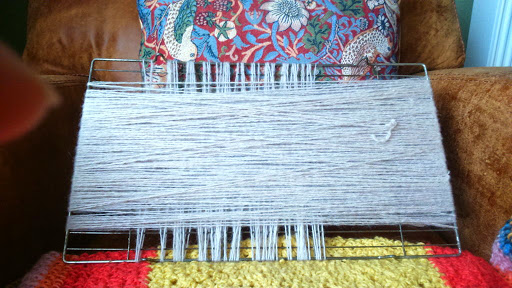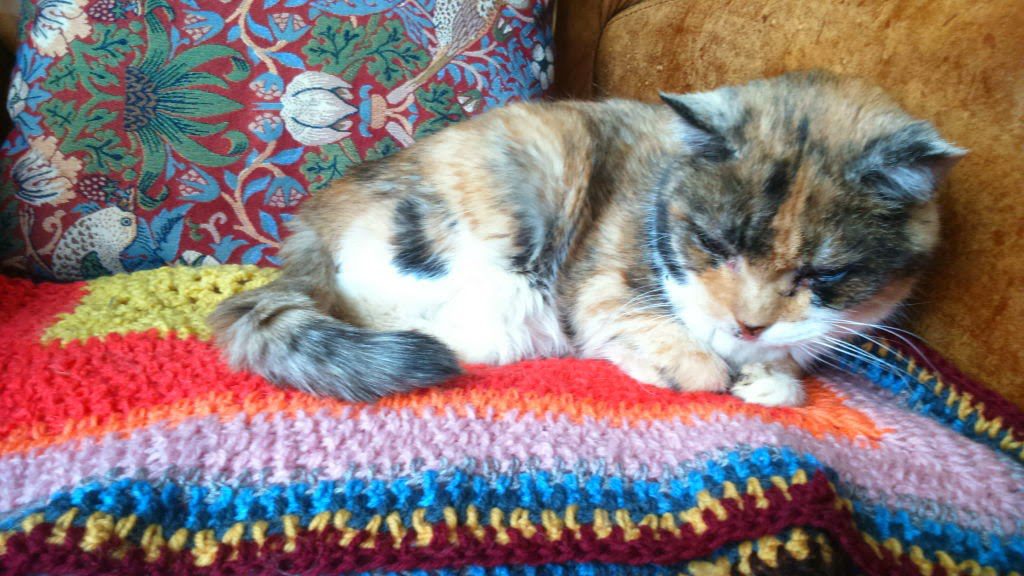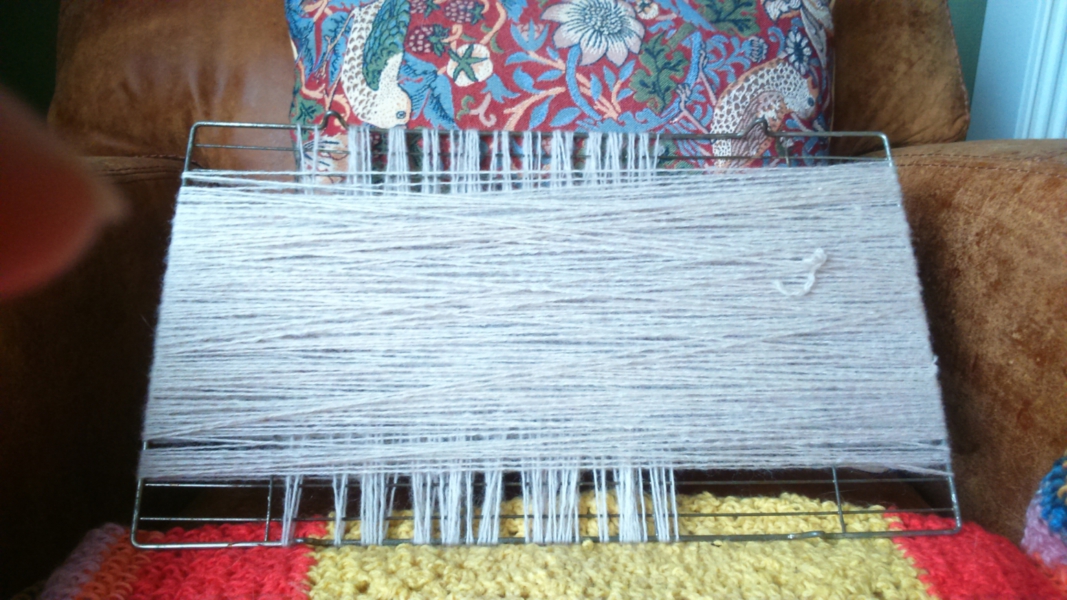The question of how to straighten unravelled wool is something I’ve re-visited recently. I have several balls of unravelled wool which I’ve decided to use in a crochet afghan I’ve had on the go for a while now. These are years old, are pure wool, and were my grandmother’s (my Nan’s).
I’ve had this yarn since I was at least 10 years old, or possibly younger. They’re still crimpy after all this time, and I don’t know why she wound the wool up into balls without straightening it.
Perhaps she intended to do that at a later date, but, a young pair of hands started to rummage in the yarn box, and it was a job that never got done. Now I want to straighten out that wool and put it to good use.
Unravelling knitwear for my grandmother’s generation was a way of life. The make do and mend mentality, that was so necessary during the 1940s, probably never left her. I had several stripey jumpers knitted by her, re-purposed (to use a more modern phrase) from old knitwear.
How to Straighten Unravelled Wool
If you’re a crafter with wool, you might want to revisit Made Do and Mend ways of the 1940s. If you’re not, you still might be interested in how clothes can be made from re-purposed wool (read on). But, first, having thought about how to straighten the wool from those crimpy balls of wool, I see there is more than one way to do this:
- Use steam: apparently you can dekink yarn with steam, using a steam iron. I don’t have a steam iron to test this out, as I still use a non-steam iron that keeps going and going, with a water spray bottle. I’m not sure whether it would handle wool so set in its ways, but if anyone has successfully done this, I’d be interested to know.
- Wind the wool into skeins, round a niddy noddy or round the back of a chair, submerge in water and gently squeeze until just damp, then hang up and weight the skeins; with anything you can tie on. Washed stones are a quick way to make a weight. This works fine for newly hand-spun wool to even out the twist, but my skeins of unravelled wool just didn’t play ball. Perhaps I needed heavier weights.
- What has worked better, has been to wind the wool into skeins and dampen, as above, but then wind round something convenient like a chair back, or….a cake cooling rack. When needs must, the mind will alight on a suitable object. This is now my method of choice for stubborn crimpy wool.

Unravelled Wool and Resourceful Clothes
Unravelling wool may sit well with a growing band of people who are now rejecting fast fashion. They’re looking for ways to avoid buying too many new clothes and are cultivating a more sustainable wardrobe. Using unravelled, and straightened, yarn (or any yarn, for that matter), requires some making skills, so this may put you off if you’re a non-crafter. If this is you, and you have knits that you don’t want anymore, you could seek out knitting/making friends who’d be prepared to unravel.
I’ve not yet, though, come across an enterprising commercial maker of clothes using unravelled yarn. Wool has, nonetheless, long been shredded to make shoddy: a coarse cloth made from those shredded fibres (sometimes cotton too), respun with more wool. It’s getting harder to recycle single fibre materials because so many textiles are made up of natural fibres mixed with synthetic. If we bought more clothes made of pure, natural fibres, maybe this recycling will revive again?
Nevertheless, clothes from scraps are coming on to the fashion scene. Designers are out there taking an interest in zero waste fashion. I’ve questioned when are remnants and scraps too small to use? But, here the question is less about size and more about time and effort, for some people.
Considering the cost of pure wool yarn, I think its worth it for pure wool. Wool – it took time to grow on a sheep’s back. So, if it kept a sheep warm for a season, it will keep you warm for many seasons too.
Even though it’s a renewable resource (that sheep grew another fleece), it took time and energy to shear, process and spin into yarn. To be frugal with it is to respect it, and to understand that everything has to come from somewhere. All wool has to come from somewhere….
In a small way, unravelling wool and re-using, can be part of a much-needed revival of traditional knowledge in order to live well into the future.
Old Wool: New Project
I have a crochet blanket that I started when about 10 years of age and never finished. I considered unravelling this to use in my new crochet blanket, but as it’s a convenient size for a chair seat, and my cat likes it, it has found a new home.



Like it! There's nothing more annoying than wiggly wool! I had the same problem – but with a mercerised cotton. The kinks just wouldn't come out, so I ended up wasting a lot of wool. (It also had the issue of a twist that kept unravelling as I knitted – a friend told me to start the ball from the inside, which worked!)
The kinky stuff went to a craft collective at the uni in the end, so I'm hoping it can still be used for something…
I've never tried de-kinking cotton yarn – I would think it would be more stubborn than age-old crimpey wool. Perhaps someone at the craft collective would have found a use for it (kinky or straightened).